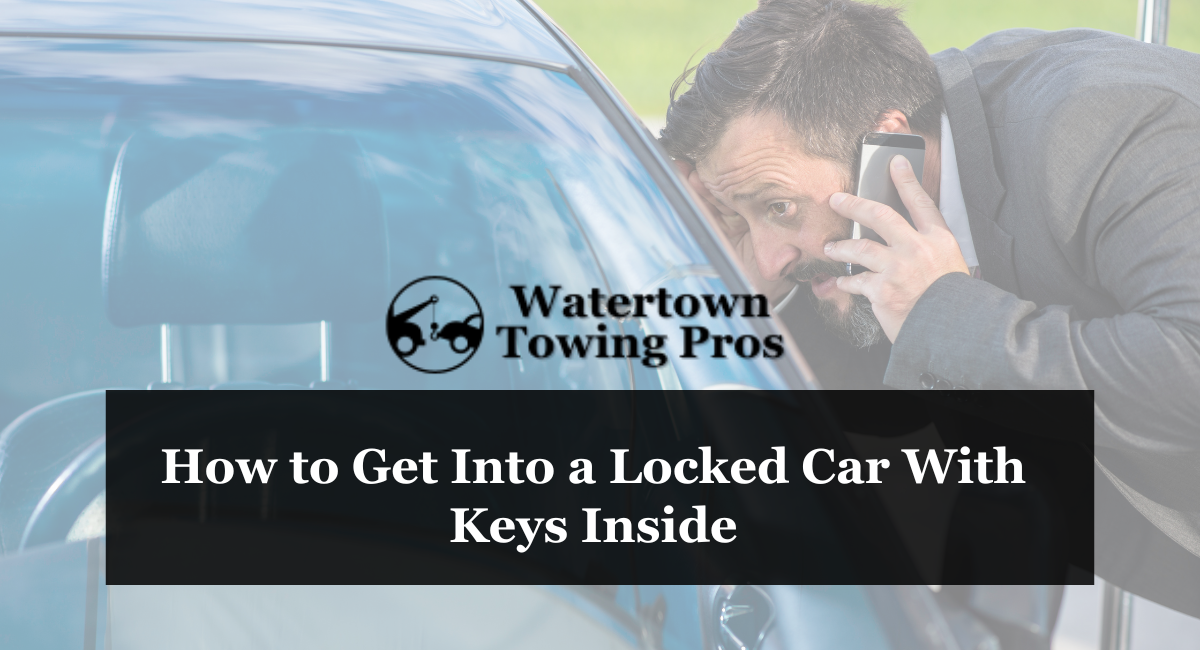We’ve all been there: the car door slams shut, the engine rumbles to a stop, and your heart sinks as you realize the keys are still sitting innocently on the passenger seat.
Whether it’s a quick grocery run, a gym session, or an unexpected downpour, accidentally locking your keys inside your car can be a frustrating and stressful experience. However, before you start panicking or resorting to drastic measures, take a deep breath and consider your options.
Before You Start Prying: Taking a Moment to Breathe
Before you reach for the nearest makeshift jimmy or start imagining the cost of a broken window, take a moment to assess the situation calmly:
- Double-Check All Doors and the Trunk: It might sound silly, but a quick check of all car doors and even the trunk can save you a lot of trouble. Sometimes, in the rush of getting out, we might miss that a door is actually ajar.
- Spare Key Check: Do you have a spare key hidden somewhere on your car? Some people creatively magnetize a spare key to an inconspicuous part of the car’s undercarriage. If not, do you have a spare key at home, or perhaps with a trusted friend or neighbor nearby? A readily available spare key is the easiest solution if accessible.
- Remote App Check: Many modern cars come equipped with smartphone apps that allow remote lock and unlock functionality. While setting this up beforehand would have been ideal, this instance serves as a reminder to explore such features for future convenience and peace of mind.
DIY Tricks: Proceed with Caution
If the above options don’t work, here are a few DIY methods you can attempt, but remember to exercise extreme caution to avoid damaging your car:
- The Shoelace Trick (Limited Application): This method only works with older cars that have upright, manual lock posts. You’ll need a long shoelace and some patience. Tie a slipknot in the middle of the shoelace. Carefully wedge the string into the corner of the door near the lock, then maneuver the loop around the lock button. Once positioned, tighten the loop and pull upwards to attempt unlocking the door. This method requires practice and carries the risk of scratching the car’s paint.
- The Slim Jim Method (Not Recommended): Traditionally, a slim jim is a thin metal tool used by professionals to manipulate car locks through the gap between the window and the weatherstripping. Due to the high risk of damaging the window and internal locking mechanism, it’s strongly advised to leave this method to professionals. However, if you’re in a dire situation with no other options available, a straightened wire coat hanger might serve as a last resort. Extreme caution is crucial to avoid breaking the glass or damaging the internal locking mechanism.
- The Inflatable Wedge (Use with Caution): This tool is a wedge-shaped inflatable device used to create a small gap between the door and the car frame. Once a gap is created, you can insert a thin rod or wire to reach the unlock button or the internal lock lever. While it requires careful handling, the inflatable wedge poses a slightly lower risk of damage compared to other DIY methods.
Important Note: These DIY methods are best suited for older cars with simpler locking mechanisms. Modern cars with complex security systems and electronic locks are much more challenging to bypass without professional help.
When Calling in the Pros is the Smart Choice
Sometimes, the smartest and safest option is to call in the experts. Here are some situations where seeking professional assistance is the best course of action:
- Roadside Assistance: Subscription services like AAA or CAA often offer lockout assistance as part of their membership plans. While there might be a wait time, it’s usually the cheapest and most convenient solution, especially if you already have a membership.
- Locksmith: A professional locksmith specializes in unlocking cars and can get you back into your vehicle quickly and efficiently, typically with minimal damage risk. Expect a service fee, but it’s significantly lower than the cost of replacing a shattered window.
- Police (ONLY in Emergencies): If a child or pet is locked inside the car, or if there’s a medical emergency, calling 911 immediately is the highest priority. While the police have tools and training to get you in without damaging your vehicle, the primary concern should always be the safety of those trapped inside.
Prevention is Key: How to Avoid Locking Yourself Out Again
Nobody enjoys the stress of a lockout, so here are some keys with you every single time you exit the vehicle, even for a quick errand or a short stop. Consistency is key to forming this habit.
- Spare Key Fob: Many newer cars come with two key fobs. Keep one with you at all times, and store the other in a safe but accessible location, like a hidden compartment in your home or with a trusted friend or family member.
- Hide-a-Key (Use with Discretion): Magnetic spare key containers are available, but use them with utmost discretion. Consider hiding it within a fender instead of the more obvious location under the bumper, where it’s easily accessible to anyone.
- Keyless Entry Codes: If your car has a keypad entry system, program a secure code that can be used to unlock the door in case your key fob fails or is lost.
Final Thoughts: Prioritizing Safety and Peace of Mind
Locking your keys in your car is a common experience, but it doesn’t have to be a disaster. By following these strategies and remaining calm, you can navigate this situation efficiently with minimal stress or damage.
Remember, if the situation presents a danger to yourself, children, or pets, prioritize their safety and call emergency services immediately. With a little preparation and awareness, you can significantly reduce the chances of getting locked out and enjoy the peace of mind of knowing you have options.

